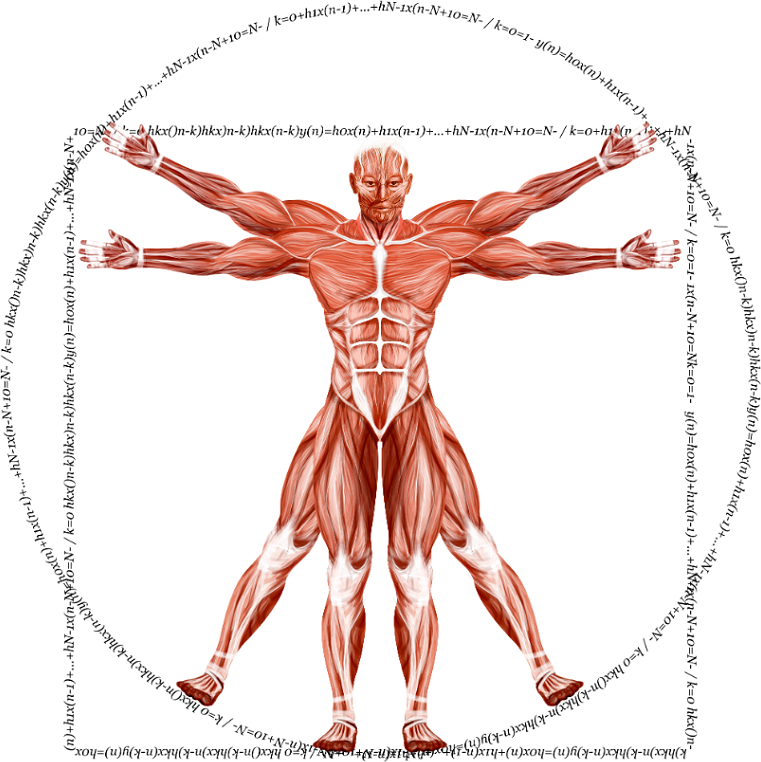Myofibrillar vs Sarcoplasmic Hypertrophy: Definitions & Training
Is it really possible to train for both myofibrillar and sarcoplasmic hypertrophy?

Want to maximize muscle gain?
Understanding the different types of muscle hypertrophy—myofibrillar vs sarcoplasmic—and how they can be achieved through proper training and nutrition can give you an edge.
Read on to unlock maximum muscle growth.
Key Takeaways
- Myofibrillar hypertrophy involves an increase in the size and number of myofibrils, resulting in greater strength and power.
- Sarcoplasmic hypertrophy involves an increase in the volume of fluid and energy-storing molecules within muscle cells, resulting in greater endurance and size.
- You can train for myofibrillar, sarcoplasmic hypertrophy, or both!
Understanding the Different Types of Muscle Hypertrophy
Muscle hypertrophy can be categorized into two main types: myofibrillar hypertrophy and sarcoplasmic hypertrophy. Both types involve an increase in muscle size, but they differ in terms of the specific changes that occur within the muscle fibers.
Myofibrillar hypertrophy refers to an increase in the size and number of myofibrils within the muscle fibers. Myofibrils are responsible for generating force during muscle contractions, so an increase in their size and number leads to greater strength and power. This type of hypertrophy is often associated with heavy resistance training and low repetitions.
On the other hand, sarcoplasmic hypertrophy involves an increase in the volume of sarcoplasm within the muscle fibers. Sarcoplasm is the fluid that surrounds the myofibrils and contains various substances such as glycogen, ATP, and enzymes. Sarcoplasmic hypertrophy is typically associated with higher repetition ranges and shorter rest periods.
Myofibrillar Hypertrophy: Definition and Characteristics
Myofibrillar hypertrophy is characterized by an increase in the size and number of myofibrils within the muscle fibers. This type of hypertrophy is often associated with heavy resistance training and low repetitions. When you perform exercises that target myofibrillar hypertrophy, you are primarily focusing on increasing your strength and power.
One of the key characteristics of myofibrillar hypertrophy is an increase in muscle fiber density. This means that the muscle fibers become more tightly packed together, resulting in a denser and more compact muscle. This increase in density is what gives the muscles a hard and defined appearance.
Exercises that promote myofibrillar hypertrophy include compound movements such as squats, deadlifts, bench presses, and overhead presses. These exercises require a high level of force production and recruit a large number of muscle fibers, leading to myofibrillar hypertrophy.
Sarcoplasmic Hypertrophy: Definition and Characteristics
Sarcoplasmic hypertrophy involves an increase in the volume of sarcoplasm within the muscle fibers. This type of hypertrophy is typically associated with higher repetition ranges and shorter rest periods. When you perform exercises that target sarcoplasmic hypertrophy, you are primarily focusing on increasing the size and volume of your muscles.
One of the key characteristics of sarcoplasmic hypertrophy is an increase in muscle size without a significant increase in strength. This means that while your muscles may appear larger, they may not necessarily be stronger. Sarcoplasmic hypertrophy is often associated with bodybuilding and aesthetic goals, as it can give the muscles a full and rounded appearance.
Exercises that promote sarcoplasmic hypertrophy include isolation movements such as bicep curls, tricep extensions, lateral raises, and leg extensions. These exercises typically involve higher repetition ranges and shorter rest periods, which promote an increase in sarcoplasmic volume within the muscle fibers.
Genetics in Myofibrillar & Sarcoplasmic Hypertrophy
Genetics play a significant role in determining an individual's potential for muscle hypertrophy. Some people are genetically predisposed to respond better to certain types of training and experience greater gains in muscle size and strength.
For example, individuals with a higher percentage of fast-twitch muscle fibers tend to have a greater potential for myofibrillar hypertrophy. Fast-twitch muscle fibers are responsible for generating force and power, so individuals with a higher proportion of these fibers may see greater gains in strength and power through heavy resistance training.
On the other hand, individuals with a higher percentage of slow-twitch muscle fibers may have a greater potential for sarcoplasmic hypertrophy. Slow-twitch muscle fibers are responsible for endurance activities and have a higher capacity for storing glycogen and other substances within the sarcoplasm. This can lead to an increase in muscle size without a significant increase in strength.
It's important to note that while genetics can play a role in determining an individual's potential for muscle hypertrophy, it does not mean that someone with less favorable genetics cannot achieve significant muscle growth. With proper training and nutrition, anyone can make progress and see improvements in their muscle size and strength.
What Does the Science Say?
- Sarcoplasmic Hypertrophy in Skeletal Muscle: A Scientific “Unicorn” or Resistance Training Adaptation? (Roberts et al. 2020): This review indicates that during resistance training, muscles can grow in a way where the sarcoplasm increases more than the myofibril proteins, known as sarcoplasmic hypertrophy. Muscle can also grow in other ways with resistance training, including conventional hypertrophy, where myofibril proteins and muscle size increase together, and myofibril packing, where protein accretion happens before muscle growth.
- Resistance Training-Induced Changes in Integrated Myofibrillar Protein Synthesis (Damas et al., 2016): This study demonstrates that skeletal muscle hypertrophy, as a result of resistance training (RT), is primarily influenced by changes in myofibrillar protein synthesis (MyoPS). The research found that MyoPS rates after an initial resistance exercise bout were not directly correlated with hypertrophy, highlighting that muscle growth results from accumulated increases in MyoPS, particularly after a reduction in muscle damage over time.
- Acute Post-Exercise Myofibrillar Protein Synthesis Is Not Correlated with Resistance Training-Induced Muscle Hypertrophy in Young Men (Mitchell et al., 2014): This study investigates the relationship between acute myofibrillar protein synthesis (MPS) following resistance exercise and long-term muscle hypertrophy. It found no direct correlation between acute MPS rates and muscle growth, suggesting that factors beyond immediate post-exercise protein synthesis rates may contribute to training-induced hypertrophy.
Training Strategies for Myofibrillar Hypertrophy
To promote myofibrillar hypertrophy, it's important to focus on heavy resistance training and low repetitions. This means lifting weights that are challenging and performing fewer repetitions with each set.
Compound exercises that target multiple muscle groups and require a high level of force production are particularly effective for promoting myofibrillar hypertrophy. Examples of these exercises include squats, deadlifts, bench presses, and overhead presses.
When performing these exercises, it's important to use proper form and technique to ensure that you are targeting the intended muscle groups and minimizing the risk of injury. It's also important to gradually increase the weight lifted over time to continue challenging your muscles and promoting progressive overload.
In terms of rep ranges, a range of 4-6 repetitions per set is often recommended for myofibrillar hypertrophy. This allows you to lift heavy weights and focus on generating maximum force with each repetition.
Resistance training-induced changes in integrated myofibrillar protein synthesis are related to hypertrophy, particularly after attenuation of muscle damage, suggesting a connection between heavy resistance training and myofibrillar hypertrophy (Damas et al., 2016).
Training Strategies for Sarcoplasmic Hypertrophy
To promote sarcoplasmic hypertrophy, it's important to focus on higher repetition ranges and shorter rest periods. This means lifting weights that are lighter and performing more repetitions with each set.
Isolation exercises that target specific muscle groups and allow for a greater range of motion are particularly effective for promoting sarcoplasmic hypertrophy. Examples of these exercises include bicep curls, tricep extensions, lateral raises, and leg extensions.
When performing these exercises, it's important to maintain proper form and technique to ensure that you are effectively targeting the intended muscle groups. It's also important to keep the rest periods between sets relatively short to maintain a high level of intensity throughout the workout.
In terms of rep ranges, a range of 8-12 repetitions per set is often recommended for sarcoplasmic hypertrophy. This allows you to lift lighter weights and focus on generating a greater volume of work with each set.
Combining Myofibrillar and Sarcoplasmic Hypertrophy Training for Optimal Results
While myofibrillar and sarcoplasmic hypertrophy are often discussed as separate entities, it's important to note that they are not mutually exclusive. In fact, combining both types of hypertrophy training can lead to optimal results in terms of muscle growth and strength gains.
By incorporating both heavy resistance training and higher repetition ranges into your training program, you can target both myofibrillar and sarcoplasmic hypertrophy. This allows you to maximize your muscle growth potential and achieve a balanced and well-rounded physique.
One way to incorporate both types of hypertrophy training is to alternate between phases of heavy resistance training and higher repetition ranges. For example, you could spend several weeks focusing on heavy compound exercises with low repetitions to promote myofibrillar hypertrophy, followed by several weeks of isolation exercises with higher repetitions to promote sarcoplasmic hypertrophy.
Another approach is to incorporate both types of training within the same workout. This can be done by performing compound exercises at the beginning of the workout to target myofibrillar hypertrophy, followed by isolation exercises towards the end of the workout to target sarcoplasmic hypertrophy.
Common Mistakes to Avoid when Training for Muscle Hypertrophy
When it comes to training for muscle hypertrophy, there are several common mistakes that individuals often make. These mistakes can hinder progress and prevent you from achieving your desired results. Here are some common mistakes to avoid:
- Neglecting proper form and technique: It's important to prioritize proper form and technique when performing exercises. Using improper form can increase the risk of injury and prevent you from effectively targeting the intended muscle groups.
- Not challenging yourself with progressive overload: Progressive overload is crucial for muscle growth. If you're not continually challenging your muscles with progressively heavier weights or higher levels of intensity, you may not see significant gains in muscle size and strength.
- Overtraining: Overtraining occurs when you don't allow your muscles enough time to recover between workouts. This can hinder progress and increase the risk of injury. It's important to listen to your body and give yourself adequate rest and recovery time.
- Neglecting proper nutrition: Proper nutrition is crucial for muscle hypertrophy. Without adequate protein intake, calorie surplus, and nutrient timing, your muscles may not have the necessary resources to grow and recover.
- Lack of consistency: Consistency is key when it comes to training for muscle hypertrophy. It's important to stick to a regular training schedule and make exercise a priority in your daily routine.
By avoiding these common mistakes and focusing on proper training and nutrition, you can maximize your muscle growth potential and achieve your desired results.
The Importance of Proper Nutrition in Muscle Hypertrophy Training
Proper nutrition plays a crucial role in muscle hypertrophy training. Without adequate nutrition, your muscles may not have the necessary resources to grow and recover from intense workouts. Here are some key factors to consider when it comes to nutrition for muscle hypertrophy:
- Protein intake: Protein is the building block of muscle tissue, so it's important to consume enough protein to support muscle growth and repair. The general recommendation for individuals looking to build muscle is to consume around 0.8-1 gram of protein per pound of body weight per day.
- Calorie surplus: To support muscle growth, you need to consume more calories than you burn. This means being in a calorie surplus, where you are consuming more calories than your body needs for maintenance. The exact calorie surplus will vary depending on factors such as your body weight, activity level, and goals.
- Nutrient timing: Timing your nutrient intake around your workouts can help optimize muscle growth and recovery. Consuming a combination of protein and carbohydrates before and after your workouts can provide your muscles with the necessary fuel and nutrients to support growth and repair.
- Hydration: Staying hydrated is important for overall health and performance. Dehydration can negatively impact muscle function and recovery, so it's important to drink enough water throughout the day.
By prioritizing proper nutrition and ensuring that you are consuming enough protein, calories, and fluids, you can support muscle growth and maximize your results from training.
Wrapping Up: Myofibrillar vs Sarcoplasmic Hypertrophy
Muscle hypertrophy is a complex process that involves the increase in size and volume of muscle fibers. Understanding the different types of muscle hypertrophy, including myofibrillar and sarcoplasmic hypertrophy, is crucial for anyone looking to maximize their muscle growth potential.
By incorporating proper training strategies that target both types of hypertrophy, individuals can achieve optimal results in terms of muscle growth and strength gains. It's also important to prioritize proper nutrition to provide the muscles with the necessary resources to grow and recover.
By avoiding common mistakes and focusing on proper training and nutrition, individuals can achieve their desired results and build a strong, muscular physique. With dedication, consistency, and the right approach, anyone can achieve significant muscle hypertrophy and improve their overall fitness and bodybuilding goals.
FAQ
What is Myofibrillar Hypertrophy?
Myofibrillar hypertrophy is a type of muscle growth that occurs when the number and size of the contractile units within muscle fibers increase. This type of hypertrophy is associated with strength gains and is often seen in athletes who perform heavy resistance training.
What is Sarcoplasmic Hypertrophy?
Sarcoplasmic hypertrophy is a type of muscle growth that occurs when the volume of fluid and non-contractile proteins within muscle fibers increase. This type of hypertrophy is associated with muscle size gains and is often seen in bodybuilders who perform high-volume training.
What is the difference between Myofibrillar and Sarcoplasmic Hypertrophy?
The main difference between myofibrillar and sarcoplasmic hypertrophy is the type of muscle growth that occurs. Myofibrillar hypertrophy is associated with strength gains and an increase in the number and size of contractile units within muscle fibers. Sarcoplasmic hypertrophy is associated with muscle size gains and an increase in the volume of fluid and non-contractile proteins within muscle fibers.
Can you train for both Myofibrillar and Sarcoplasmic Hypertrophy?
Yes, it is possible to train for both myofibrillar and sarcoplasmic hypertrophy. A combination of heavy resistance training and high-volume training can stimulate both types of muscle growth.
What types of exercises are best for Myofibrillar Hypertrophy?
Exercises that involve heavy resistance and low repetitions are best for myofibrillar hypertrophy. Examples include squats, deadlifts, and bench press.
What types of exercises are best for Sarcoplasmic Hypertrophy?
Exercises that involve high volume and moderate to high repetitions are best for sarcoplasmic hypertrophy. Examples include bicep curls, tricep extensions, and leg extensions.
Can nutrition affect Myofibrillar and Sarcoplasmic Hypertrophy?
Yes, nutrition can affect both myofibrillar and sarcoplasmic hypertrophy. Consuming adequate protein is important for both types of muscle growth, while consuming carbohydrates can help fuel high-volume training for sarcoplasmic hypertrophy.

